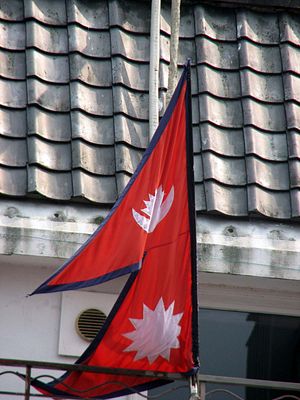The persistent drumbeat of positive tests and reported deaths in other countries due to COVID-19, the disease caused by the SARS-nCoV-2 virus, have created widespread concerns in Nepal also.
Widespread fears of a possible outbreak are a tough blow for the Nepali economy, which seemed on the cusp of a modest revival after the 2015 earthquake and subsequent Indian blockade.
Nepal is starting to suffer the most abrupt and widespread cessation of economic activity due to widespread fears of a possible outbreak of this deadly respiratory pathogen that is capable of community transmission.
Service industries like tourism and hotels are being hit especially hard. Tourism was expected to drive Nepal’s economic growth and contribute greatly to the high growth target of 8.5 percent that the government had set for this year, but this industry tends to have little financial cushion. The contribution of the tourism sector to Nepal’s economy stood at 7.9 percent in 2018, according to the report prepared by the World Travel and Tourism Council, which represents the private tourism industry and counts more than 200 company members.
It is a tourist season but there is very low occupancy of hotels in major tourist hubs like Pokhara, Thamel, Bandipur, and Chitwan. For Nepal, India is the largest source of tourism industry followed by China and the United States.
Booking cancellations due to the fears of the possible outbreak and the travel restrictions are rocking the tourism industry. Several countries have issued travel advisories and are in lockdown mode to rein in the spread of COVID-19. “We are down to 20-30 percent occupancy now. Last year at this time, we were running at 80-90 percent,” said Ashik Gurung, owner of Hotel Mountain Top in Pokhara. He is worried about the occupancy rates plummeting due to this deadly coronavirus. “In this crucial situation, few operation cost slashing activities are undertaken, including limiting operations and staff motivated to avail their leaves,” he added.
“The occupancy rate is 5-10 percent now,” said Ganesh Bahadur Thapa, owner of Snowland Hotel in Barahi Chowk, Pokhara. He has never seen this disaster before. “It is very difficult to sustain our business,” he added.
The government on Wednesday announced measures including a nationwide halt to the gathering of more than 25 people at a place to prevent the outbreak of COVID-19.
To rein in the possible outbreak, a meeting of a high-level coordination committee was formed to combat COVID-19 under the leadership of Deputy Prime Minister and Defense Minister Ishwar Pokharel decided to shut down all the public spaces like cultural centers, cinema halls, stadiums, museums, nightclubs, health clubs, and swimming pools and other places of recreational activities till April 30.
The Government on Wednesday barred the gatherings of more than 25 people in public places like temples, mosques, churches, etc. “The movement of the people is restricted unless it’s very important,” said a statement released by the high-level coordination committee. These restrictions will also have a significant impact on all our communities.
The coronavirus outbreak threatens to delay the completion of several infrastructure projects in Nepal. The construction of Pokhara International Airport, Gautam Buddha International Airport, and Melamchi Drinking Water Projects are being greatly affected due to the absence of Chinese workers. These projects are built by Chinese firms and the majority of their staff are Chinese nationals.
Foreign employment is a major source of remittance in Nepal, too. In the current situation, coronavirus’ effect on remittances is disastrous. Remittances contributed 26 percent to the country’s GDP last year. According to a report, during the first four months of the current fiscal year, Nepal received more than 50 percent of its total remittance from countries like Qatar, Saudi Arabia, Kuwait, the United Arab Emirates, and Bahrain.
Nepal’s manufacturing industries mostly rely on raw materials from China. The knock-on effects for Nepal are significant as the supply of raw materials from China has become reduced drastically. Nepal Rastra Bank, the central bank of Nepal, in its Mid-Term Review the 2019-20 Monetary Policy said that the spread of coronavirus, along with low paddy production this year, would have a bad impact on our economy.
People are worried as still we don’t know much about this deadly virus and how deep and widespread the economic fallout will be. It is still hard to predict. It will be sometime before we can estimate the full economic blow from this virus. Historical experience suggests that the rebounds from this kind of output loss are possible, but it takes time. Nepal is also facing a drop in output unprecedented in its intensity and the rebounds from this kind of loss are possible, but not by any means guaranteed.
Brabim Karki is an author and businessman living in Nepal. He owns the Mero Tribune and has written two books. He writes opinion editorials in different newspapers in Nepal.

































